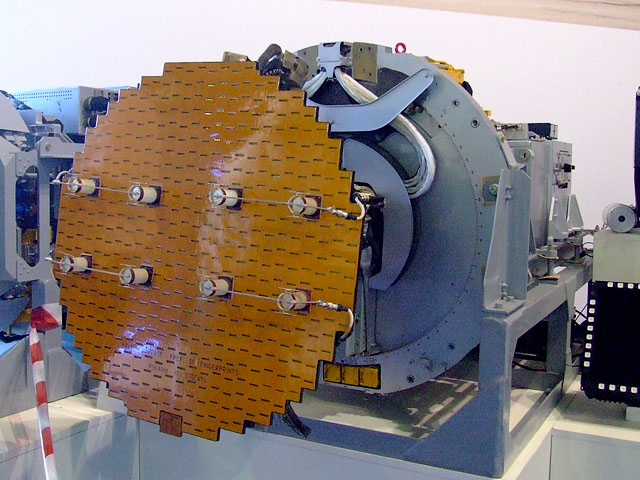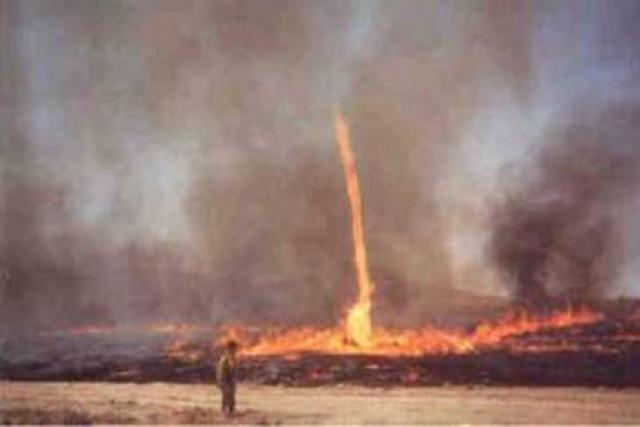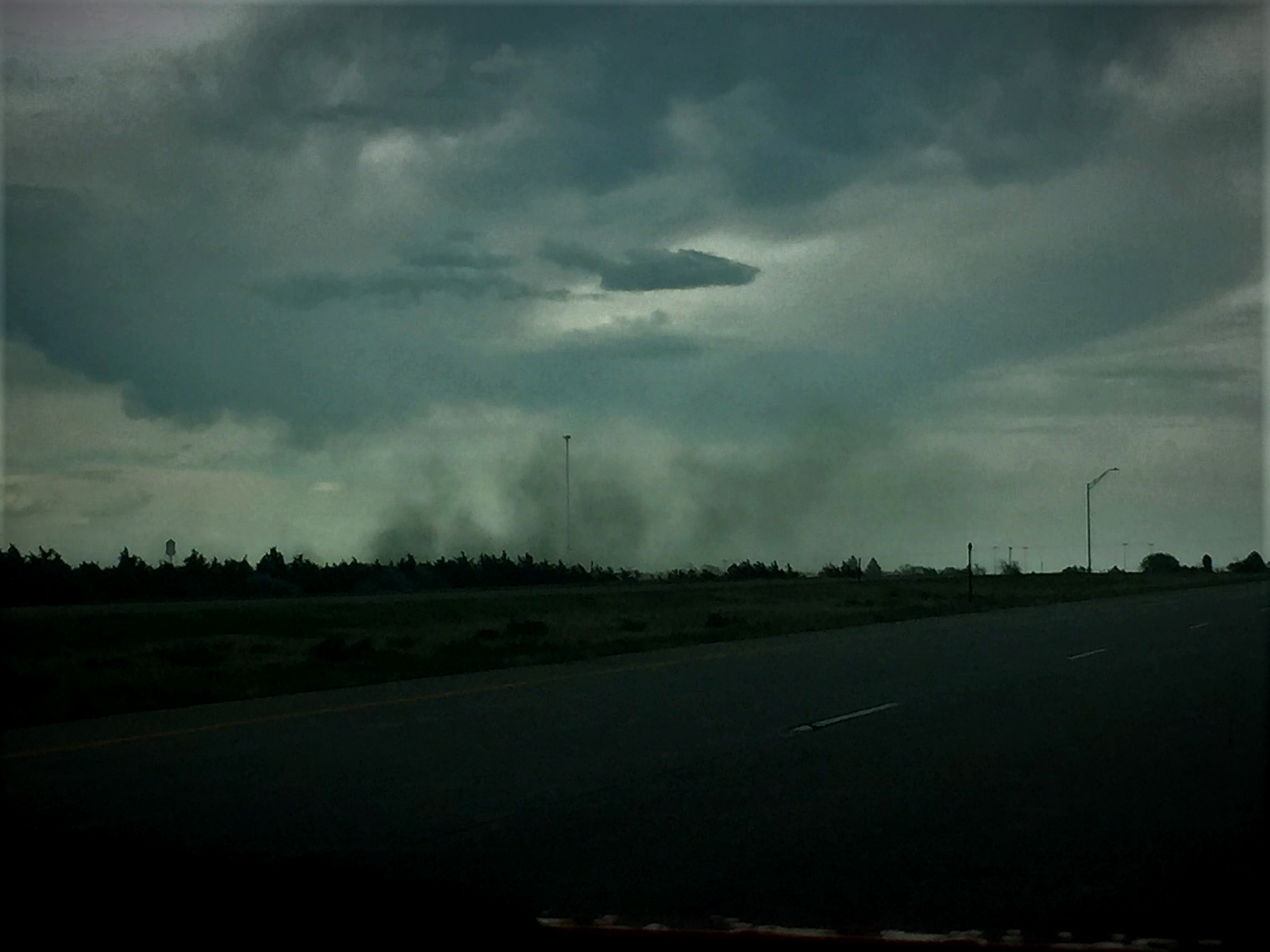|
Tornados
A tornado is a violently rotating column of air that is in contact with the surface of Earth and a cumulonimbus cloud or, in rare cases, the base of a cumulus cloud. It is often referred to as a twister, whirlwind or cyclone, although the word cyclone is used in meteorology to name a weather system with a low-pressure area in the center around which, from an observer looking down toward the surface of the Earth, winds blow counterclockwise in the Northern Hemisphere and clockwise in the Southern Hemisphere. Tornadoes come in many shapes and sizes, and they are often (but not always) visible in the form of a condensation funnel originating from the base of a cumulonimbus cloud, with a cloud of rotating debris and dust beneath it. Most tornadoes have wind speeds less than , are about across, and travel several kilometers (a few miles) before dissipating. The most extreme tornadoes can attain wind speeds of more than , can be more than in diameter, and can stay on the grou ... [...More Info...] [...Related Items...] OR: [Wikipedia] [Google] [Baidu] |
Enhanced Fujita Scale
The Enhanced Fujita scale (abbreviated EF-Scale) is a scale that rates tornado intensity based on the severity of the damage a tornado causes. It is used in the United States and France, among other countries. The EF scale is also unofficially used in other countries, including China and Brazil. The rating of a tornado is determined by conducting a tornado damage survey. The scale has the same basic design as the original Fujita scale—six intensity categories from zero to five, representing increasing degrees of damage. It was revised to reflect better examinations of tornado damage surveys, in order to align wind speeds more closely with associated storm damage. Better standardizing and elucidating what was previously subjective and ambiguous, it also adds more types of structures and vegetation, expands degrees of damage, and better accounts for variables such as differences in construction quality. An "EF-Unknown" (EFU) category was later added for tornadoes that cannot ... [...More Info...] [...Related Items...] OR: [Wikipedia] [Google] [Baidu] |
2007 Elie Tornado
The 2007 Elie tornado was a small but extremely powerful and erratic tornado that occurred in Canada, during the evening hours of Friday, June 22, 2007. The powerful Fujita scale, F5 tornado that struck the town of Elie, Manitoba, Elie, in the Canada, Canadian Provinces and territories of Canada, province of Manitoba ( west of Winnipeg) was known for its unusual path, how it was during its path, its rope to cone structure as opposed to a "wedge" structure, and how it is unique compared to other F5/Enhanced Fujita scale, EF5 tornadoes. It was part of a small two-day tornado outbreak that occurred in the area and reached a maximum width of . The tornado was unusual because it caused the extreme damage during its roping out stage at a mere in width and moved extremely slowly and unpredictably. The tornado tracked primarily southeast, as opposed to the usual northeast, and made multiple loops and sharp turns. While several houses were leveled, no one was injured or killed by the torn ... [...More Info...] [...Related Items...] OR: [Wikipedia] [Google] [Baidu] |
Storm Prediction Center
The Storm Prediction Center (SPC) is a US government agency that is part of the National Centers for Environmental Prediction (NCEP), operating under the control of the National Weather Service (NWS), which in turn is part of the National Oceanic and Atmospheric Administration (NOAA) of the United States Department of Commerce (DoC). Headquartered at the National Weather Center in Norman, Oklahoma, the Storm Prediction Center is tasked with forecasting the risk of severe thunderstorms and tornadoes in the contiguous United States. It issues #Convective outlooks, convective outlooks, #Mesoscale discussions, mesoscale discussions, and #Weather watches, watches as a part of this process. Convective outlooks are issued for the following eight days (issued separately for Day 1, Day 2, Day 3, and Days 4–8), and detail the risk of severe thunderstorms and tornadoes during the given forecast period, although tornado, hail and wind details are only available for Days 1 an ... [...More Info...] [...Related Items...] OR: [Wikipedia] [Google] [Baidu] |
Pulse-Doppler Radar
A pulse-Doppler radar is a radar system that determines the range to a target using pulse-timing techniques, and uses the Doppler effect of the returned signal to determine the target object's velocity. It combines the features of pulse radars and continuous-wave radars, which were formerly separate due to the complexity of the electronics. The first operational pulse-Doppler radar was in the CIM-10 Bomarc, an American long range supersonic missile powered by ramjet engines, and which was armed with a W40 nuclear weapon to destroy entire formations of attacking enemy aircraft. Pulse-Doppler systems were first widely used on fighter aircraft starting in the 1960s. Earlier radars had used pulse-timing in order to determine range and the angle of the antenna (or similar means) to determine the bearing. However, this only worked when the radar antenna was not pointed down; in that case the reflection off the ground overwhelmed any returns from other objects. As the ground moves at th ... [...More Info...] [...Related Items...] OR: [Wikipedia] [Google] [Baidu] |
South Africa
South Africa, officially the Republic of South Africa (RSA), is the Southern Africa, southernmost country in Africa. Its Provinces of South Africa, nine provinces are bounded to the south by of coastline that stretches along the Atlantic Ocean, South Atlantic and Indian Ocean; to the north by the neighbouring countries of Namibia, Botswana, and Zimbabwe; to the east and northeast by Mozambique and Eswatini; and it encloses Lesotho. Covering an area of , the country has Demographics of South Africa, a population of over 64 million people. Pretoria is the administrative capital, while Cape Town, as the seat of Parliament of South Africa, Parliament, is the legislative capital, and Bloemfontein is regarded as the judicial capital. The largest, most populous city is Johannesburg, followed by Cape Town and Durban. Cradle of Humankind, Archaeological findings suggest that various hominid species existed in South Africa about 2.5 million years ago, and modern humans inhabited the ... [...More Info...] [...Related Items...] OR: [Wikipedia] [Google] [Baidu] |
Science News
''Science News'' (''SN'') is an American monthly magazine devoted to articles about new scientific and technical developments, typically gleaned from recent scientific and technical journals. The periodical has been described as having a scope across "all sciences" and as having "up to date" coverage. History ''Science News'' has been published since 1922 by the Society for Science & the Public, a non-profit organization founded by E. W. Scripps in 1920. American chemist Edwin Slosson served as the publication's first editor. From 1922 to 1966, it was called ''Science News Letter''. The title was changed to ''Science News'' with the March 12, 1966, issue (vol. 89, no. 11). Tom Siegfried was the editor from 2007 to 2012. In 2012, Siegfried stepped down, and Eva Emerson became the Editor in Chief of the magazine. In 2017, Eva Emerson stepped down to become the editor of a new digital magazine, ''Annual Reviews''. On February 1, 2018, Nancy Shute became the Editor in Chief of ... [...More Info...] [...Related Items...] OR: [Wikipedia] [Google] [Baidu] |
Steam Devil
A steam devil is a small, weak Whirlwind (atmospheric phenomenon), whirlwind over water (or sometimes wet land) that has drawn fog into the vortex, thus rendering it visible. They form over large lakes and oceans during cold air outbreaks while the water is still relatively warm, and can be an important mechanism in vertically transporting moisture. They are a component of sea smoke. Smaller steam devils and steam whirls can form over geyser basins even in warm weather because of the very high water temperatures. Although observations of steam devils are generally quite rare, hot springs in Yellowstone Park produce them on a daily basis. Steam devils have only been reported and studied since the 1970s. They are weaker than waterspouts and distinct from them. The latter are more akin to weak tornadoes over water. Naming Steam devils were first reported by Lyons and Pease in 1972 concerning their observations of Lake Michigan in January 1971. This month was a particularly co ... [...More Info...] [...Related Items...] OR: [Wikipedia] [Google] [Baidu] |
Fire Whirl
A fire whirl, fire devil or fire tornado is a whirlwind induced by a fire and often (at least partially) composed of flame or ash. These start with a whirl of wind, often made visible by smoke, and may occur when intense rising heat and turbulent wind conditions combine to form whirling eddies of air. These eddies can contract to a tornado-like vortex that sucks in debris and combustible gases. The phenomenon is sometimes labeled a fire tornado, firenado, fire swirl, or fire twister, but these terms usually refer to a separate phenomenon where a fire has such intensity that it generates an actual tornado. Fire whirls are not usually classifiable as tornadoes as the vortex in most cases does not extend from the surface to cloud base. Also, even in such cases, those fire whirls very rarely are classic tornadoes, as their vorticity derives from surface winds and heat-induced lifting, rather than from a tornadic mesocyclone aloft. The phenomenon was first verified in the 2 ... [...More Info...] [...Related Items...] OR: [Wikipedia] [Google] [Baidu] |
Dust Devil
A dust devil (also known regionally as a dirt devil) is a strong, well-formed, and relatively short-lived whirlwind. Its size ranges from small (18 in/half a metre wide and a few yards/metres tall) to large (more than 30 ft/10 m wide and more than half a mile/1 km tall). The primary vertical motion is upward. Dust devils are usually harmless, but can on rare occasions grow large enough to pose a threat to both people and property. They are comparable to tornadoes in that both are a weather phenomenon involving a vertically oriented rotating column of wind. Most tornadoes are associated with a larger parent circulation, the mesocyclone on the back of a supercell thunderstorm. Dust devils form as a swirling updraft under sunny conditions during fair weather, rarely coming close to the intensity of a tornado. Formation Dust devils form when a pocket of hot air near the surface rises quickly through cooler air above it, forming an updraft. If conditions ar ... [...More Info...] [...Related Items...] OR: [Wikipedia] [Google] [Baidu] |
Gustnado
A gustnado is a brief, shallow surface-based vortex which forms within the downburst emanating from a thunderstorm. The name is a portmanteau by elision of "gust front tornado", as gustnadoes form due to non-tornadic straight-line wind features in the downdraft (outflow (meteorology), outflow), specifically within the gust front of strong thunderstorms. Gustnadoes tend to be noticed when the vortices loft sufficient debris or form condensation cloud to be visible although it is the wind that makes the gustnado, similarly to tornadoes. As these Eddy (fluid dynamics), eddies very rarely connect from the surface to the cloud base, they are very rarely considered as tornadoes. The gustnado has little in common with tornadoes structurally or dynamically in regard to vertical development, Tornado intensity, intensity, longevity, or Tornadogenesis, formative process—as classic tornadoes are associated with mesocyclones within the inflow (meteorology), inflow (updraft) of the storm, not ... [...More Info...] [...Related Items...] OR: [Wikipedia] [Google] [Baidu] |
High Latitude
The polar regions, also called the frigid zones or polar zones, of Earth are Earth's polar ice caps, the regions of the planet that surround its geographical poles (the North and South Poles), lying within the polar circles. These high latitudes are dominated by floating sea ice covering much of the Arctic Ocean in the north, and by the Antarctic ice sheet on the continent of Antarctica and the Southern Ocean in the south. Definitions The Arctic has various definitions, including the region north of the Arctic Circle (currently Epoch 2010 at 66°33'44" N), or just the region north of 60° north latitude, or the region from the North Pole south to the timberline. The Antarctic is usually defined simply as south of 60° south latitude, or the continent of Antarctica. The 1959 Antarctic Treaty uses the former definition. The two polar regions are distinguished from the other two climatic and biometric belts of Earth, a tropics belt near the equator, and two middle latitude ... [...More Info...] [...Related Items...] OR: [Wikipedia] [Google] [Baidu] |
Equator
The equator is the circle of latitude that divides Earth into the Northern Hemisphere, Northern and Southern Hemisphere, Southern Hemispheres of Earth, hemispheres. It is an imaginary line located at 0 degrees latitude, about in circumference, halfway between the North Pole, North and South Pole, South poles. The term can also be used for any other celestial body that is roughly spherical. In three-dimensional space, spatial (3D) geometry, as applied in astronomy, the equator of a rotating spheroid (such as a planet) is the parallel (circle of latitude) at which latitude is defined to be 0°. It is an imaginary line on the spheroid, equidistant from its geographical pole, poles, dividing it into northern and southern hemispheres. In other words, it is the intersection of the spheroid with the plane (geometry), plane perpendicular to its axis of rotation and midway between its geographical poles. On and near the equator (on Earth), noontime sunlight appears almost directly o ... [...More Info...] [...Related Items...] OR: [Wikipedia] [Google] [Baidu] |










